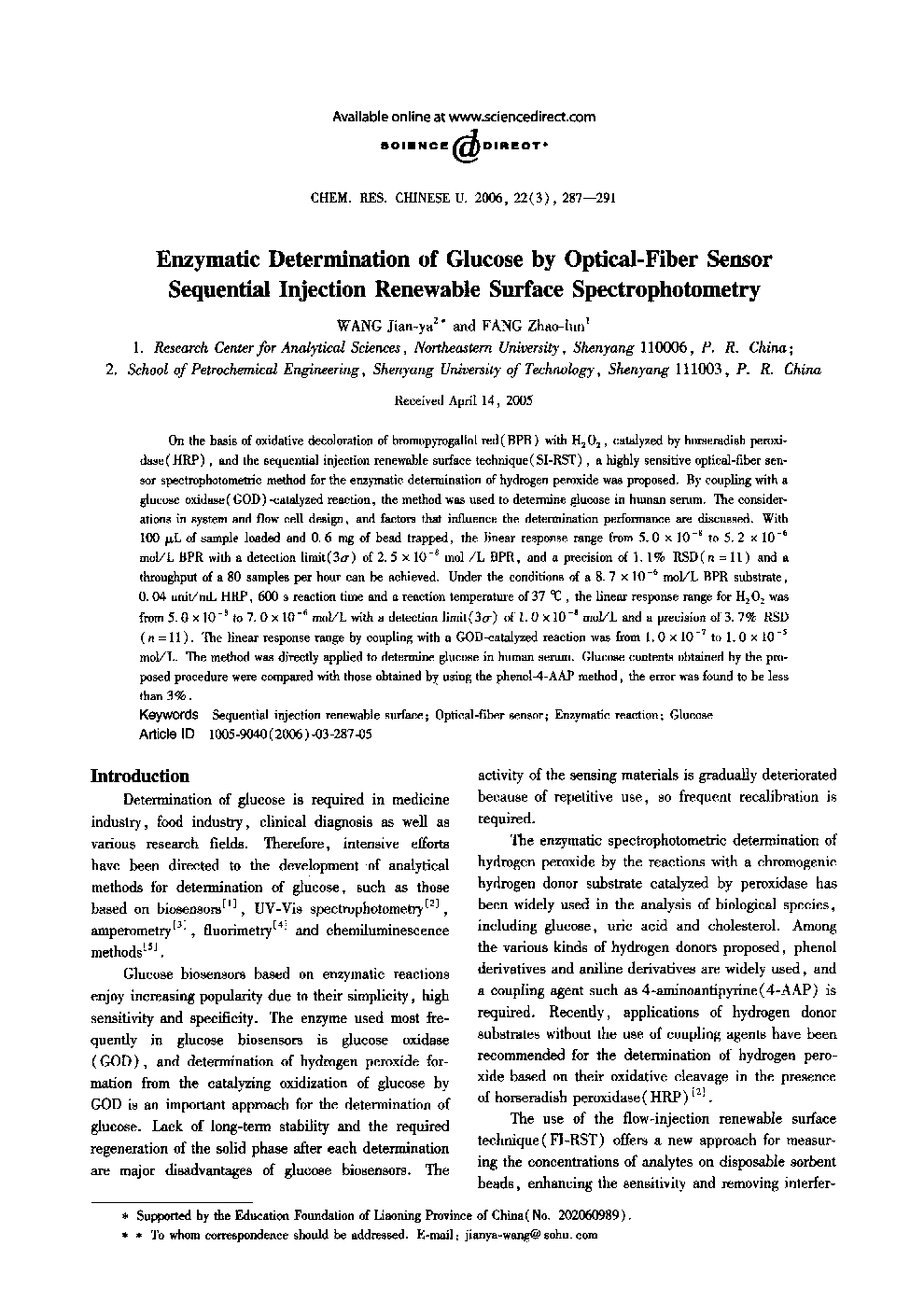| Article ID | Journal | Published Year | Pages | File Type |
|---|---|---|---|---|
| 1253110 | Chemical Research in Chinese Universities | 2006 | 5 Pages |
Abstract
On the basis of oxidative decoloration of bromopyrogallol red(BPR) with H2O2, catalyzed by horseradish peroxidase(HRP), and the sequential injection renewable surface technique(SI-RST), a highly sensitive optical-fiber sensor spectrophotometric method for the enzymatic determination of hydrogen peroxide was proposed. By coupling with a glucose oxidase(GOD) -catalyzed reaction, the method was used to determine glucose in human serum. The considerations in system and flow cell design, and factors that influence the determination performance are discussed. With 100 μL of sample loaded and 0.6 mg of bead trapped, the linear response range from 5.0 à 10â8 to 5.2 à 10â6 mol/L BPR with a detection limit(3Ï) of 2.5 à 10â8 mol/L BPR, and a precision of 1.1% RSD(n = 11) and a throughput of a 80 samples per hour can be achieved. Under the conditions of a 8.7 à 10â6 mol/L BPR substrate, 0.04 unit/mL HRP, 600 s reaction time and a reaction temperature of 37°C, the linear response range for H2 O2 was from 5.0 à 10â8 to 7.0 à 10â6 mol/L with a detection limit(3Ï) of 1.0 à 10â8 mol/L and a precision of 3.7% RSD (n = 11). The linear response range by coupling with a GOD-catalyzed reaction was from 1.0 à 10â7 to 1.0 à 10â5 mol/L. The method was directly applied to determine glucose in human serum. Glucose contents obtained by the proposed procedure were compared with those obtained by using the phenol-4-AAP method, the error was found to be less than 3%.
Keywords
Related Topics
Physical Sciences and Engineering
Chemistry
Chemistry (General)
Authors
WANG Jian-ya, FANG Zhao-lun,
